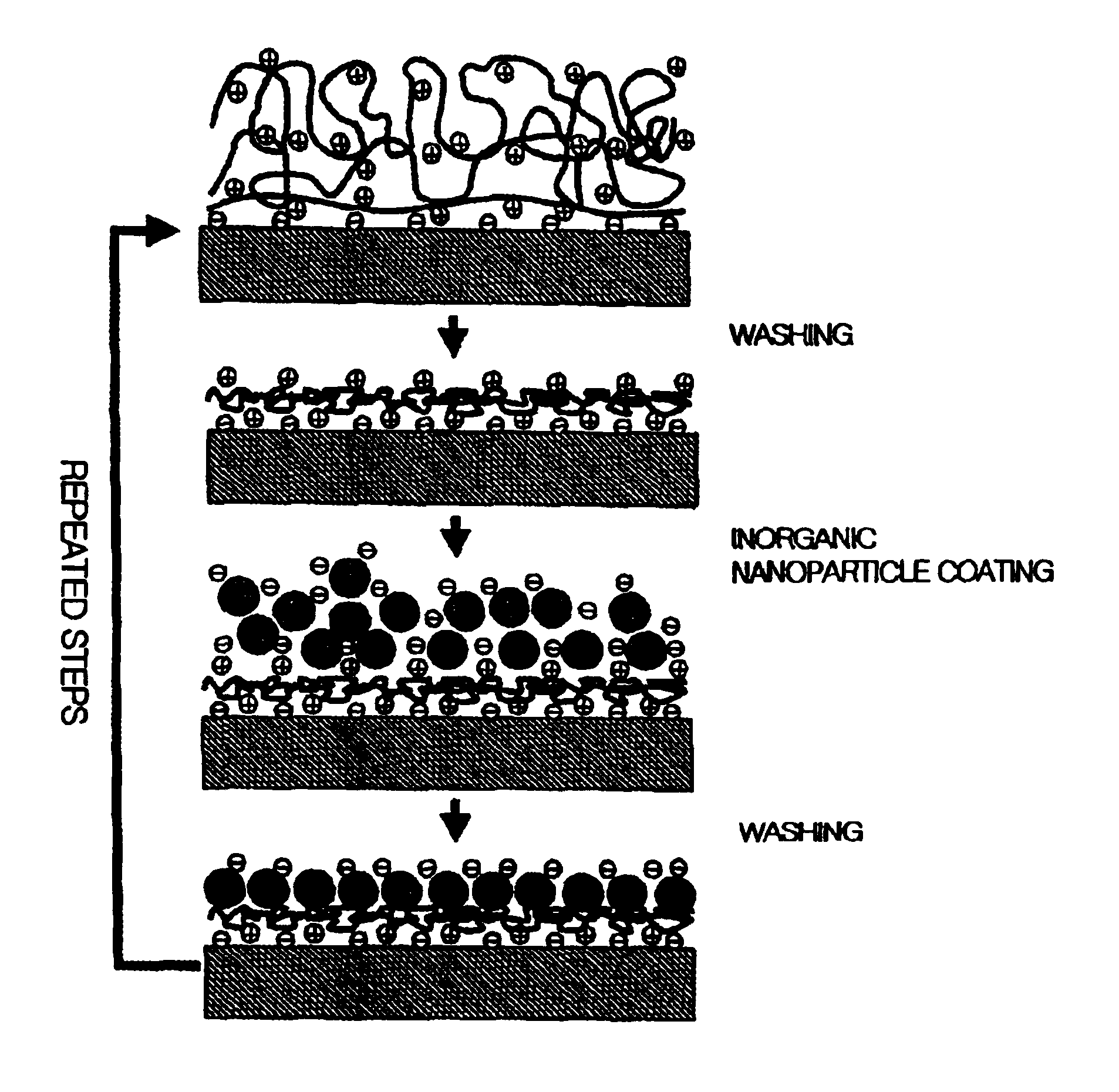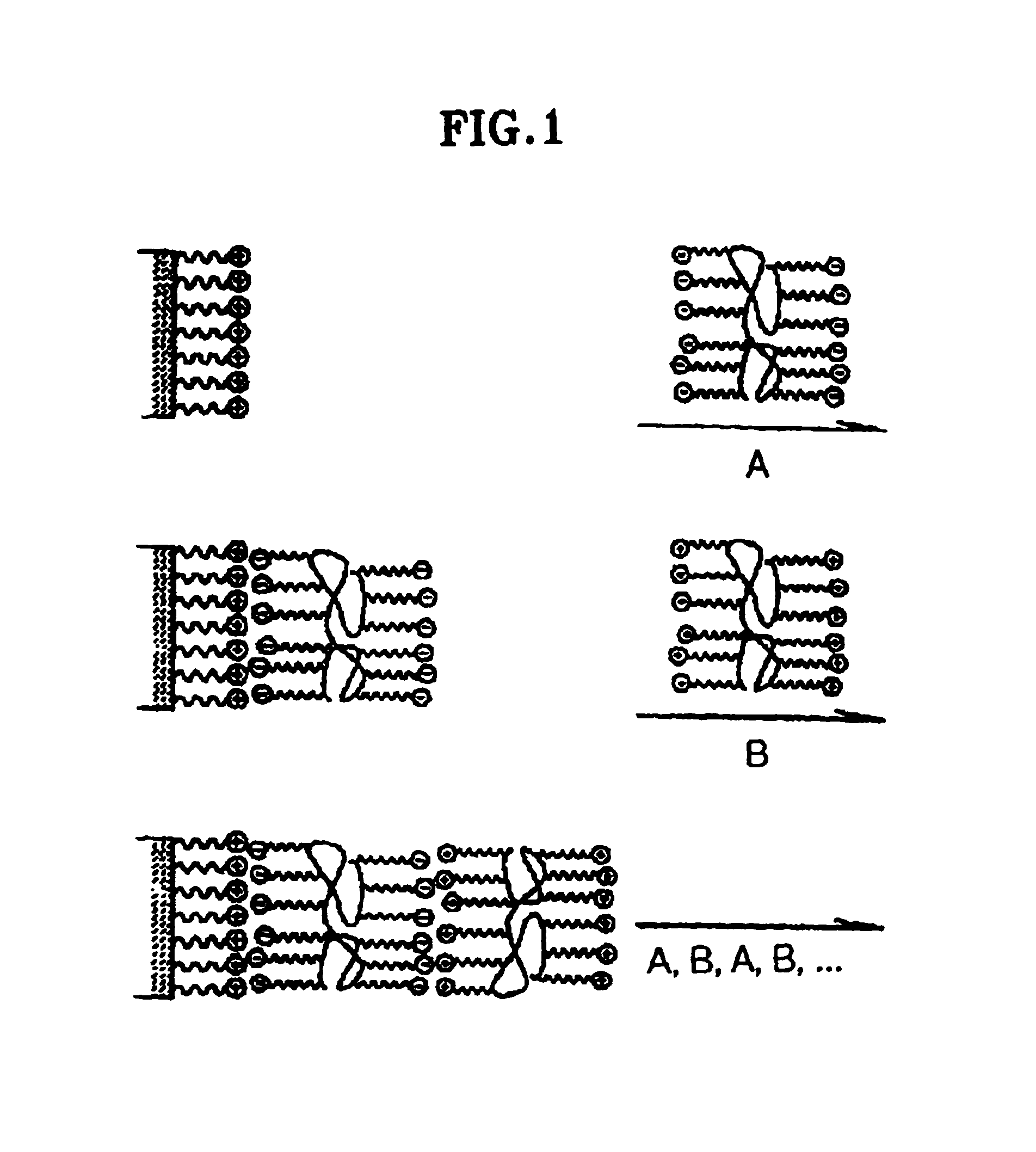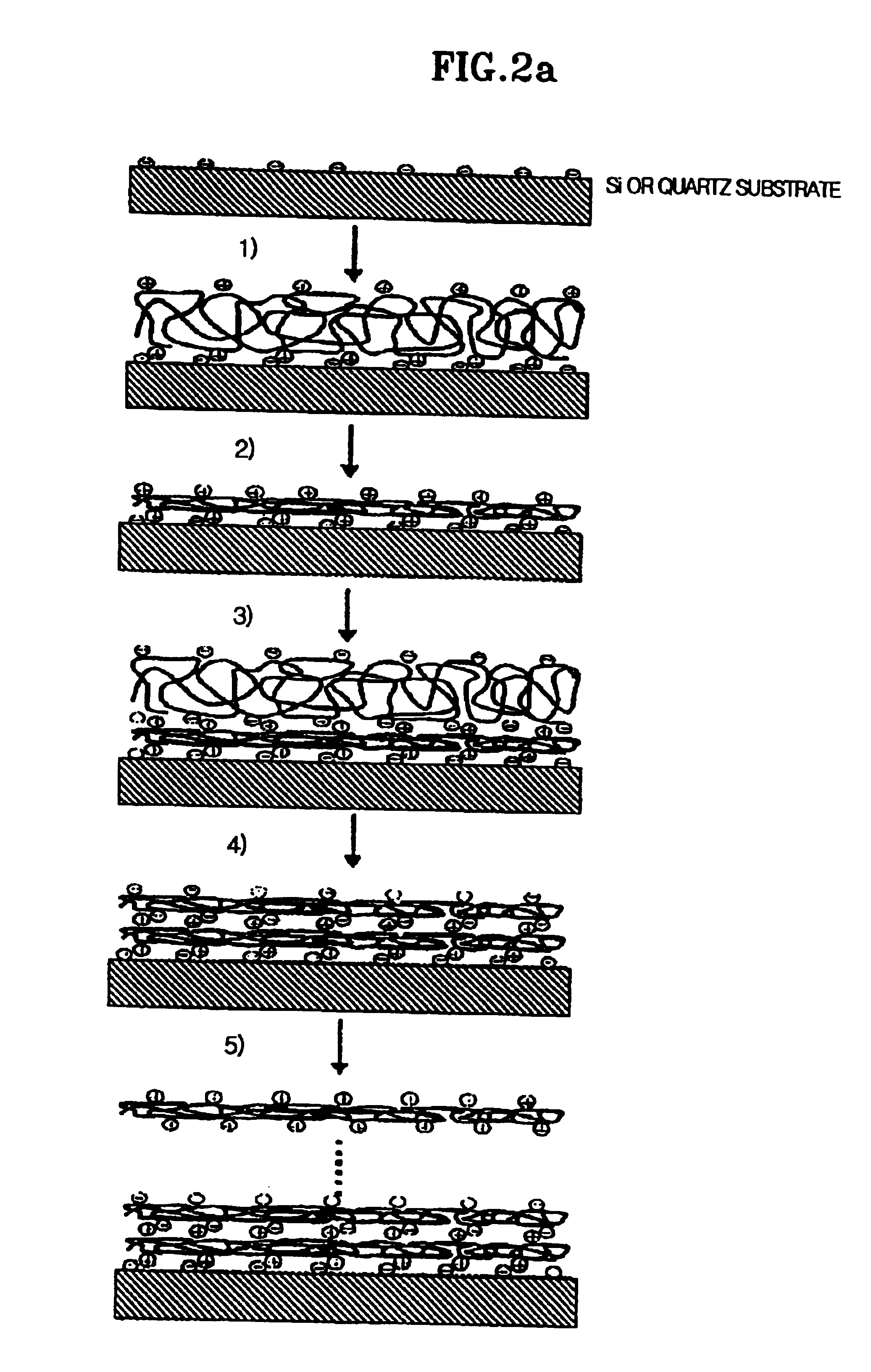Process for fabricating monolayer/multilayer ultrathin films
a technology of ultrathin films and fabrication methods, which is applied in the direction of light-sensitive devices, electrolytic capacitors, coatings, etc., can solve the problems of inability to easily control the thickness of the film layer, limited solvent application, and inadequacies of the ultrathin film with less than 10 nm thickness, etc., to achieve short process time, good film quality, and long time
- Summary
- Abstract
- Description
- Claims
- Application Information
AI Technical Summary
Benefits of technology
Problems solved by technology
Method used
Image
Examples
example 1a
[0073]Quartz substrates with typical dimension of (1.3 cm×4.5 cm) for the deposition of polyelectrolytes were initially cleaned by ultrasonification in a hot mixture of H2SO4 / H2O2 (7 / 3) for 3 hours. They were then heated in a mixture of H2O / H2O2 / NH3 (5 / 1 / 1) at 80° C. for 1 hour, and subsequently dried by N2 gas purging. After this procedure, the substrates were negatively charged and placed on a spinner. Then, 2 ml of 0.01 M PAH were dropped onto the substrate and the substrate was rotated with a spinner at 3000 rpm for 15 sec.
[0074]After the deposition of the first organic layer, the substrates were thoroughly rinsed twice with plenty of deionized water. The spinning time and the speed for the washing step were also identical to those for the layer deposition.
[0075]The above two steps (deposition+washing) were repeated with PSS polyelectrolyte and these four steps are repeated as many times as to obtain multilayer thin films with a bilayer number of 1, 2, 4, 6, 10, 12, 14, 16, 18, ...
example 1b
[0078]Quartz substrates with typical dimension of (1.3 cm×4.5 cm) for the deposition of polyelectrolytes were initially cleaned by ultrasonification in a hot mixture of H2SO4 / H2O2 (7 / 3) for 3 hours. They were then heated in a mixture of H2O / H2O2 / NH3 (5 / 1 / 1) at 80° C. for 1 hour, and subsequently dried by N2 gas purging. After this procedure, the substrates were negatively charged and placed on a spinner. Then, 1 ml of 5 mM PAH was dropped on the substrate and the substrate was rotated with a spinner at 4000 rpm for 15 sec. After the deposition of the first layer, the substrates were thoroughly rinsed twice with plenty of deioninzed water. The spinning time and the speed for the washing step were also identical to those for the layer deposition.
[0079]Then, 1 ml of 2 nm CdS nanoparticles with concentration of 0.6 mM was dropped on the substrate and the substrate was rotated with a spinner at 4000 rpm for 15 sec and the substrates were thoroughly rinsed twice with plenty of deionized w...
example 2a
[0083]Multilayer thin films with bilayer numbers of 4, 8, 12, 16, 20 were prepared according to the same procedure of Example 1a except with the spinning speed of 4000 rpm. The absorbance of the films at 225 nm is shown in FIG. 4a.
PUM
| Property | Measurement | Unit |
|---|---|---|
| thickness | aaaaa | aaaaa |
| thickness | aaaaa | aaaaa |
| pH | aaaaa | aaaaa |
Abstract
Description
Claims
Application Information
 Login to View More
Login to View More - R&D
- Intellectual Property
- Life Sciences
- Materials
- Tech Scout
- Unparalleled Data Quality
- Higher Quality Content
- 60% Fewer Hallucinations
Browse by: Latest US Patents, China's latest patents, Technical Efficacy Thesaurus, Application Domain, Technology Topic, Popular Technical Reports.
© 2025 PatSnap. All rights reserved.Legal|Privacy policy|Modern Slavery Act Transparency Statement|Sitemap|About US| Contact US: help@patsnap.com



